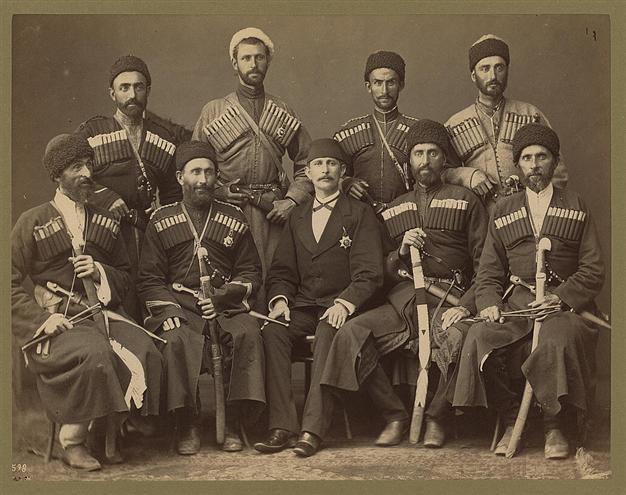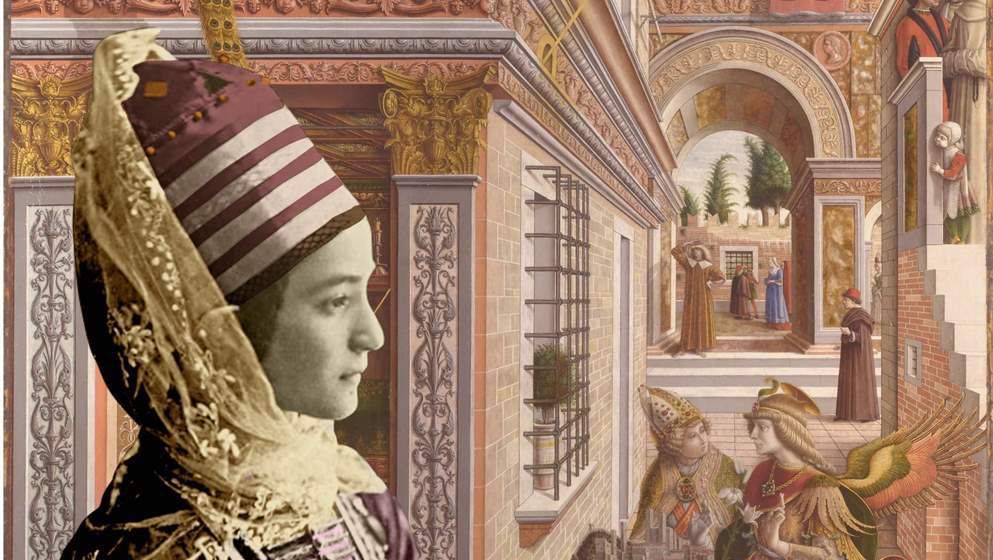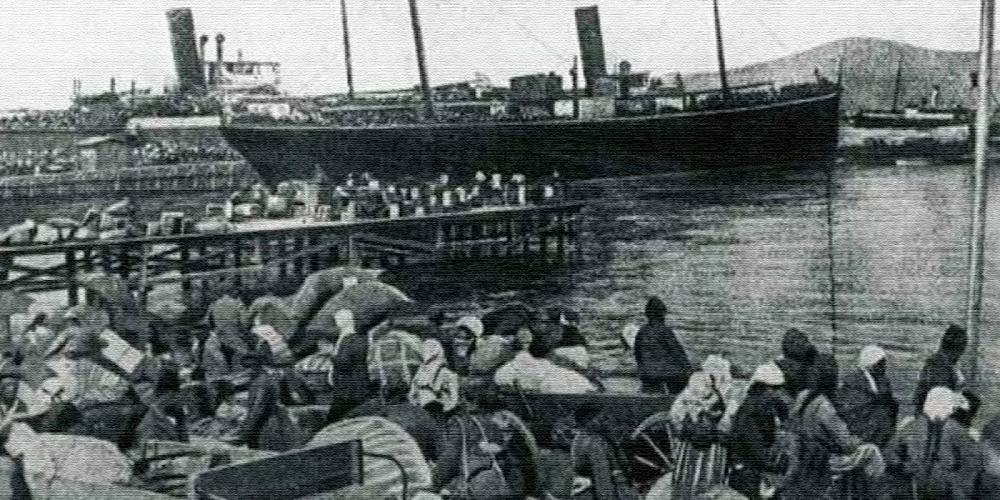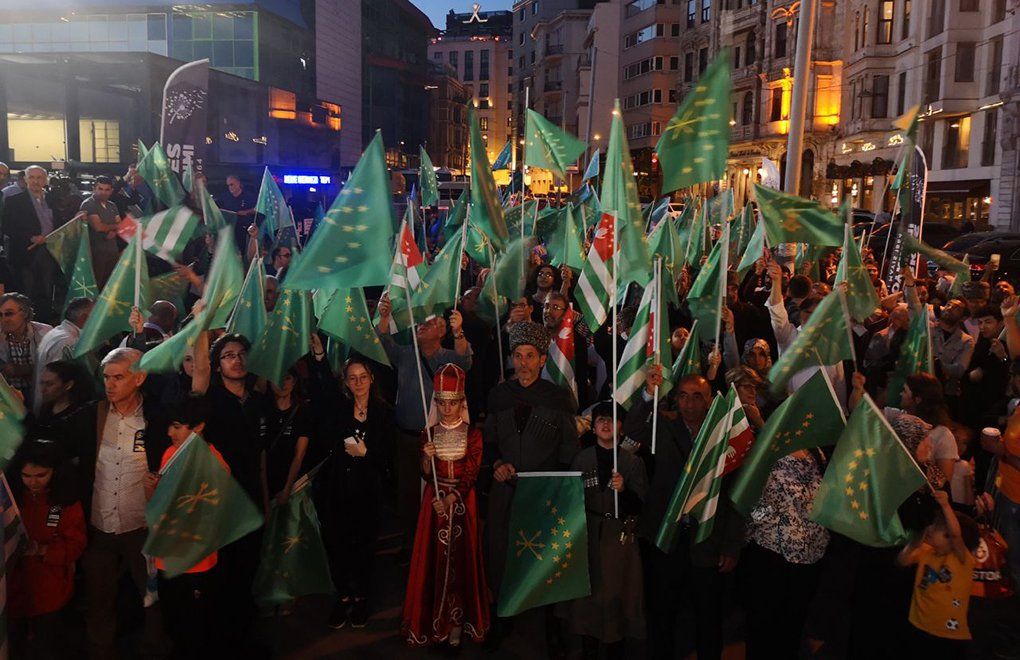The Circassian Nation
English русский Türkçe Arabic
The Rich Tapestry of Circassian Culture and Community.
Also known as Adyghe, are an indigenous people hailing from the Northwestern Caucasus region, particularly the areas encompassing modern-day Russia, Georgia, and Turkey. Their culture is a vibrant tapestry woven from centuries of history, traditions, and resilience. This article delves into the key aspects of Circassian culture and community, exploring their history, language, customs, arts, and modern-day diaspora.
Historical Background
The Circassians have a long and storied history that dates back to ancient times. Historically, they inhabited the Caucasus Mountains, a region known for its strategic significance and diverse population. Their first recorded interactions with other civilizations occurred with the Greeks and later the Romans, who noted the Circassians' warrior prowess and unique customs.
One of the most significant events in Circassian history is the Russo-Circassian War (1763-1864), which culminated in the forced expulsion and genocide of Circassians by Tsarist Russia. This tragic period, often referred to as the Circassian Genocide, led to a mass diaspora, with Circassians being scattered across the Ottoman Empire, and later, throughout the world.
The Circassian Genocide is a deeply traumatic event in the collective memory of the Circassian people. The war was marked by fierce resistance by the Circassians, who defended their homeland with tenacity and bravery. Despite their efforts, the superior military might of the Russian Empire eventually overwhelmed them. The aftermath saw mass deportations, forced marches, and widespread massacres. Estimates suggest that up to 1.5 million Circassians were killed or displaced. Many survivors fled to the Ottoman Empire, where they were resettled in various regions, including modern-day Turkey, Syria, Jordan, and other parts of the Middle East.
Language
The Circassian language, Adyghe, belongs to the Northwest Caucasian language family. It is known for its complex phonetic structure, including a large number of consonants. Adyghe has several dialects, but the two primary ones are the Kabardian and the Cherkess.
Preserving the language has been a crucial aspect of maintaining Circassian identity, especially among the diaspora. Efforts are made to teach Adyghe to younger generations through community schools and cultural organizations.
In recent years, digital technology has become a vital tool in language preservation. Mobile apps, online dictionaries, and language learning platforms have been developed to facilitate the learning of Adyghe. These resources are particularly important for diaspora communities, where access to native speakers may be limited.
Customs and Traditions
Circassian customs and traditions are deeply rooted in a code of conduct known as Adyghe Khabze. This unwritten code governs social behavior, emphasizing values such as respect, hospitality, and honor. Here are some key aspects:
Respect and Etiquette: Circassians have a profound sense of respect for elders and guests. It is customary to greet elders with specific gestures and to offer guests the best accommodations.
Hospitality: Hospitality is a cornerstone of Circassian culture. Guests are treated with the utmost care and are often offered traditional foods and drinks. Refusing hospitality is considered highly disrespectful.
Marriage and Family: Traditional Circassian marriages involve elaborate ceremonies and rituals, including the Thamade (toastmaster) who oversees the proceedings. Family ties are strong, and extended families often live close to each other.
Dance and Music: Dance and music are vital expressions of Circassian culture. Traditional dances, such as the Lezginka, are performed at weddings and celebrations, often accompanied by the Adyge Shikher (Circassian harmonica) and Pshina (flute).
Circassian weddings are grand affairs, often lasting several days and involving the entire community. The ceremonies include traditional music, dances, and rituals that symbolize the union of the couple and the merging of two families. One unique aspect of Circassian weddings is the tradition of the bride kidnapping, a ritualistic re-enactment where the groom symbolically abducts the bride, reflecting ancient customs.
Traditional Attire
Circassian attire is distinct and elaborate, often reflecting the social status and regional affiliations of the wearer. Men traditionally wear a Cherkesska, a long coat with decorative bullet pouches on the chest, over a shirt and trousers. A sheepskin hat called Papakha completes the ensemble. Women wear long, elegant dresses with intricate embroidery and headscarves.
The traditional attire is not merely clothing but a symbol of cultural identity. The Cherkesska is designed for both practicality and aesthetics, allowing ease of movement while maintaining a dignified appearance. The decorative bullet pouches, once functional in times of conflict, are now a nod to the warrior heritage of the Circassians. Women's attire, with its detailed embroidery and flowing lines, highlights the craftsmanship and artistic sensibilities of the community.
Cuisine
Circassian cuisine is a reflection of their agrarian lifestyle and geographical environment. It includes a variety of dairy products, meats, and grains. Some popular dishes include:
Shashlik: Marinated and skewered grilled meat.
Haliva: A type of cheese bread.
Mafish: Fried pastries often served with honey.
Circassian Chicken: One of the most famous Circassian dishes is Circassian Chicken (Mamursa), which features boiled chicken served with a rich walnut sauce, seasoned with garlic and spices. This dish is often prepared for special occasions and showcases the unique flavors and ingredients of Circassian cuisine.
Dairy products, particularly cheese, play a significant role in Circassian culinary traditions. Circassian cheese, known for its distinctive flavor and texture, is a staple in many households. Traditional methods of cheese-making are passed down through generations, preserving both the taste and the cultural heritage associated with the process.
Arts and Crafts
Circassians are renowned for their craftsmanship, particularly in metalwork, woodwork, and embroidery. Traditional Circassian weapons, such as daggers and swords, are highly valued for their craftsmanship and historical significance. Embroidered textiles and garments showcase intricate designs that are passed down through generations.
The art of crafting weapons is a revered tradition, reflecting the historical importance of warriors in Circassian society. These weapons are not only functional but also symbolic, representing honor, bravery, and cultural identity. The intricate designs on daggers and swords often include motifs that tell stories or symbolize important aspects of Circassian life.
Embroidery is another significant art form, with patterns and techniques that vary by region and family. These textiles are used in clothing, home decor, and ceremonial items, serving as both practical objects and artistic expressions.
The Role of Religion in Circassian Culture
Religion plays a significant role in the lives of Circassians. Historically, Circassians practiced indigenous beliefs before converting to Islam in the 17th century. Today, the majority of Circassians are Sunni Muslims, and their faith is interwoven with cultural practices.
Islamic customs and rituals are observed alongside traditional Circassian practices. For instance, important life events such as births, marriages, and deaths are marked by Islamic ceremonies. Mosques and religious leaders hold a central place in Circassian communities, providing not only spiritual guidance but also serving as community centers for cultural preservation and social gatherings.
Circassian Islam is characterized by a strong emphasis on community and family values. Religious festivals, such as Eid al-Fitr and Eid al-Adha, are celebrated with great enthusiasm, bringing families and communities together. These celebrations often include special prayers, feasts, and acts of charity, reflecting the core values of Islam and Circassian hospitality.
Education and Cultural Transmission
Education has always been highly valued in Circassian culture. Traditionally, oral storytelling was a primary method of passing down history, legends, and moral values. Elders played a crucial role in educating the younger generations about their heritage.
In the modern era, formal education systems in the diaspora have incorporated elements of Circassian history and language into their curricula. Community-run schools and cultural centers offer classes in Adyghe language, traditional dance, music, and history. These educational initiatives are essential for cultural transmission and for keeping the younger generation connected to their roots.
Circassian folklore and literature are rich sources of cultural education. Stories of the Narts, a mythical race of heroes, are central to Circassian oral tradition. These tales, passed down through generations, convey important moral lessons and cultural values. They also serve as a means of preserving historical knowledge and reinforcing a sense of identity.[
Circassian Art and Literature
Circassian art and literature reflect their rich history and cultural diversity. Traditional Circassian art includes intricate wood carvings, metalwork, and embroidery, often depicting scenes from daily life, mythology, and nature. Modern Circassian artists continue to draw inspiration from their heritage, creating works that blend traditional motifs with contemporary styles.
Literature, both oral and written, has played a crucial role in preserving Circassian culture. Folk tales, epic poems, and historical narratives are central to Circassian literary tradition.
One of the most famous literary works is the Nart Sagas, a collection of epic tales that describe the adventures of the Narts, a race of mythical heroes. These stories, passed down through generations, encapsulate the values, beliefs, and historical experiences of the Circassian people.
In contemporary literature, Circassian writers and poets continue to explore themes of identity, exile, and cultural preservation.
Their works often address the challenges faced by the diaspora and reflect a deep longing for the homeland. Authors such as Nalbiy Kuyek and Askerbi Tkhagushev have made significant contributions to Circassian literature, enriching it with their explorations of modern Circassian life and history.
The Circassian Diaspora
The Circassian diaspora is widespread, with significant populations in Turkey, Syria, Jordan, Israel, and Western countries like Germany and the United States. Despite geographical dispersion, Circassians have maintained a strong sense of community and cultural identity.
Turkey: Home to the largest Circassian population outside the Caucasus, Turkey has numerous Circassian cultural organizations, schools, and media outlets. Circassians in Turkey actively engage in cultural preservation through festivals, language classes, and community events.
Middle East: In Syria, Jordan, and Israel, Circassians have established tightly-knit communities. They are often recognized for their loyalty and service, particularly in military and security roles. In Jordan, Circassians are respected for their historical role in guarding the royal family.
Western Countries: Circassian communities in the United States, Germany, and other Western countries focus on cultural preservation through associations and online platforms. They organize cultural events, educational programs, and advocacy efforts to raise awareness about Circassian history and issues.
The diaspora communities face the challenge of preserving their unique cultural identity while integrating into the broader society. Language preservation is a particular concern, as younger generations may not have the same exposure to Adyghe. Community organizations and cultural centers play a vital role in addressing this issue, offering language classes, cultural programs, and resources to support cultural education.
Advocacy and Recognition
Circassian organizations worldwide strive for recognition of the Circassian Genocide and the right of return to their ancestral lands. These efforts include lobbying governments, raising awareness through media, and participating in international forums.
In recent years, there have been significant strides in gaining recognition for the Circassian Genocide. Various regional parliaments and international organizations have acknowledged the historical injustices suffered by the Circassians. These recognitions are not only a validation of the Circassian experience but also an important step towards reconciliation and justice.
Circassian advocacy groups also focus on human rights issues, both within the diaspora and in the Caucasus region. They work to protect the rights of Circassians, promote cultural preservation, and support the social and economic development of Circassian communities.
Joining the Circassian Family Tree
The sense of family and community is at the heart of Circassian culture. Whether through blood ties or communal bonds, Circassians maintain a strong connection to their roots. Joining the Circassian family tree involves embracing these connections and participating in the preservation and promotion of their heritage.
Conclusion
The Circassian culture and community are remarkable for their resilience, adaptability, and deep-rooted pride in their heritage. From their ancient origins in the Caucasus to their widespread diaspora, Circassians have maintained a vibrant cultural identity through language, customs, arts, and education. Despite facing significant challenges, they continue to preserve and celebrate their unique heritage, offering valuable lessons in cultural resilience and continuity.
The Circassian story is one of survival and adaptation, reflecting the enduring spirit of a people who have maintained their identity across centuries and continents. As Circassians navigate the complexities of the modern world, their cultural identity ensure that their heritage will continue to thrive for generations to come.
The Rich Tapestry of Circassian Culture and Community.
Also known as Adyghe, are an indigenous people hailing from the Northwestern Caucasus region, particularly the areas encompassing modern-day Russia, Georgia, and Turkey. Their culture is a vibrant tapestry woven from centuries of history, traditions, and resilience. This article delves into the key aspects of Circassian culture and community, exploring their history, language, customs, arts, and modern-day diaspora.

Historical Background
The Circassians have a long and storied history that dates back to ancient times. Historically, they inhabited the Caucasus Mountains, a region known for its strategic significance and diverse population. Their first recorded interactions with other civilizations occurred with the Greeks and later the Romans, who noted the Circassians' warrior prowess and unique customs.
One of the most significant events in Circassian history is the Russo-Circassian War (1763-1864), which culminated in the forced expulsion and genocide of Circassians by Tsarist Russia. This tragic period, often referred to as the Circassian Genocide, led to a mass diaspora, with Circassians being scattered across the Ottoman Empire, and later, throughout the world.
The Circassian Genocide is a deeply traumatic event in the collective memory of the Circassian people. The war was marked by fierce resistance by the Circassians, who defended their homeland with tenacity and bravery. Despite their efforts, the superior military might of the Russian Empire eventually overwhelmed them. The aftermath saw mass deportations, forced marches, and widespread massacres. Estimates suggest that up to 1.5 million Circassians were killed or displaced. Many survivors fled to the Ottoman Empire, where they were resettled in various regions, including modern-day Turkey, Syria, Jordan, and other parts of the Middle East.
Language
The Circassian language, Adyghe, belongs to the Northwest Caucasian language family. It is known for its complex phonetic structure, including a large number of consonants. Adyghe has several dialects, but the two primary ones are the Kabardian and the Cherkess.
Preserving the language has been a crucial aspect of maintaining Circassian identity, especially among the diaspora. Efforts are made to teach Adyghe to younger generations through community schools and cultural organizations.
In recent years, digital technology has become a vital tool in language preservation. Mobile apps, online dictionaries, and language learning platforms have been developed to facilitate the learning of Adyghe. These resources are particularly important for diaspora communities, where access to native speakers may be limited.
Customs and Traditions
Circassian customs and traditions are deeply rooted in a code of conduct known as Adyghe Khabze. This unwritten code governs social behavior, emphasizing values such as respect, hospitality, and honor. Here are some key aspects:
Circassian weddings are grand affairs, often lasting several days and involving the entire community. The ceremonies include traditional music, dances, and rituals that symbolize the union of the couple and the merging of two families. One unique aspect of Circassian weddings is the tradition of the bride kidnapping, a ritualistic re-enactment where the groom symbolically abducts the bride, reflecting ancient customs.

Traditional Attire
Circassian attire is distinct and elaborate, often reflecting the social status and regional affiliations of the wearer. Men traditionally wear a Cherkesska, a long coat with decorative bullet pouches on the chest, over a shirt and trousers. A sheepskin hat called Papakha completes the ensemble. Women wear long, elegant dresses with intricate embroidery and headscarves.
The traditional attire is not merely clothing but a symbol of cultural identity. The Cherkesska is designed for both practicality and aesthetics, allowing ease of movement while maintaining a dignified appearance. The decorative bullet pouches, once functional in times of conflict, are now a nod to the warrior heritage of the Circassians. Women's attire, with its detailed embroidery and flowing lines, highlights the craftsmanship and artistic sensibilities of the community.

Cuisine
Circassian cuisine is a reflection of their agrarian lifestyle and geographical environment. It includes a variety of dairy products, meats, and grains. Some popular dishes include:
Dairy products, particularly cheese, play a significant role in Circassian culinary traditions. Circassian cheese, known for its distinctive flavor and texture, is a staple in many households. Traditional methods of cheese-making are passed down through generations, preserving both the taste and the cultural heritage associated with the process.

Arts and Crafts
Circassians are renowned for their craftsmanship, particularly in metalwork, woodwork, and embroidery. Traditional Circassian weapons, such as daggers and swords, are highly valued for their craftsmanship and historical significance. Embroidered textiles and garments showcase intricate designs that are passed down through generations.
The art of crafting weapons is a revered tradition, reflecting the historical importance of warriors in Circassian society. These weapons are not only functional but also symbolic, representing honor, bravery, and cultural identity. The intricate designs on daggers and swords often include motifs that tell stories or symbolize important aspects of Circassian life.
Embroidery is another significant art form, with patterns and techniques that vary by region and family. These textiles are used in clothing, home decor, and ceremonial items, serving as both practical objects and artistic expressions.

The Role of Religion in Circassian Culture
Religion plays a significant role in the lives of Circassians. Historically, Circassians practiced indigenous beliefs before converting to Islam in the 17th century. Today, the majority of Circassians are Sunni Muslims, and their faith is interwoven with cultural practices.
Islamic customs and rituals are observed alongside traditional Circassian practices. For instance, important life events such as births, marriages, and deaths are marked by Islamic ceremonies. Mosques and religious leaders hold a central place in Circassian communities, providing not only spiritual guidance but also serving as community centers for cultural preservation and social gatherings.
Circassian Islam is characterized by a strong emphasis on community and family values. Religious festivals, such as Eid al-Fitr and Eid al-Adha, are celebrated with great enthusiasm, bringing families and communities together. These celebrations often include special prayers, feasts, and acts of charity, reflecting the core values of Islam and Circassian hospitality.
Education and Cultural Transmission
Education has always been highly valued in Circassian culture. Traditionally, oral storytelling was a primary method of passing down history, legends, and moral values. Elders played a crucial role in educating the younger generations about their heritage.
In the modern era, formal education systems in the diaspora have incorporated elements of Circassian history and language into their curricula. Community-run schools and cultural centers offer classes in Adyghe language, traditional dance, music, and history. These educational initiatives are essential for cultural transmission and for keeping the younger generation connected to their roots.
Circassian folklore and literature are rich sources of cultural education. Stories of the Narts, a mythical race of heroes, are central to Circassian oral tradition. These tales, passed down through generations, convey important moral lessons and cultural values. They also serve as a means of preserving historical knowledge and reinforcing a sense of identity.[
Circassian Art and Literature
Circassian art and literature reflect their rich history and cultural diversity. Traditional Circassian art includes intricate wood carvings, metalwork, and embroidery, often depicting scenes from daily life, mythology, and nature. Modern Circassian artists continue to draw inspiration from their heritage, creating works that blend traditional motifs with contemporary styles.
Literature, both oral and written, has played a crucial role in preserving Circassian culture. Folk tales, epic poems, and historical narratives are central to Circassian literary tradition.
One of the most famous literary works is the Nart Sagas, a collection of epic tales that describe the adventures of the Narts, a race of mythical heroes. These stories, passed down through generations, encapsulate the values, beliefs, and historical experiences of the Circassian people.
In contemporary literature, Circassian writers and poets continue to explore themes of identity, exile, and cultural preservation.
Their works often address the challenges faced by the diaspora and reflect a deep longing for the homeland. Authors such as Nalbiy Kuyek and Askerbi Tkhagushev have made significant contributions to Circassian literature, enriching it with their explorations of modern Circassian life and history.

The Circassian Diaspora
The Circassian diaspora is widespread, with significant populations in Turkey, Syria, Jordan, Israel, and Western countries like Germany and the United States. Despite geographical dispersion, Circassians have maintained a strong sense of community and cultural identity.

The diaspora communities face the challenge of preserving their unique cultural identity while integrating into the broader society. Language preservation is a particular concern, as younger generations may not have the same exposure to Adyghe. Community organizations and cultural centers play a vital role in addressing this issue, offering language classes, cultural programs, and resources to support cultural education.
Advocacy and Recognition
Circassian organizations worldwide strive for recognition of the Circassian Genocide and the right of return to their ancestral lands. These efforts include lobbying governments, raising awareness through media, and participating in international forums.
In recent years, there have been significant strides in gaining recognition for the Circassian Genocide. Various regional parliaments and international organizations have acknowledged the historical injustices suffered by the Circassians. These recognitions are not only a validation of the Circassian experience but also an important step towards reconciliation and justice.
Circassian advocacy groups also focus on human rights issues, both within the diaspora and in the Caucasus region. They work to protect the rights of Circassians, promote cultural preservation, and support the social and economic development of Circassian communities.

Joining the Circassian Family Tree
The sense of family and community is at the heart of Circassian culture. Whether through blood ties or communal bonds, Circassians maintain a strong connection to their roots. Joining the Circassian family tree involves embracing these connections and participating in the preservation and promotion of their heritage.
Conclusion
The Circassian culture and community are remarkable for their resilience, adaptability, and deep-rooted pride in their heritage. From their ancient origins in the Caucasus to their widespread diaspora, Circassians have maintained a vibrant cultural identity through language, customs, arts, and education. Despite facing significant challenges, they continue to preserve and celebrate their unique heritage, offering valuable lessons in cultural resilience and continuity.
The Circassian story is one of survival and adaptation, reflecting the enduring spirit of a people who have maintained their identity across centuries and continents. As Circassians navigate the complexities of the modern world, their cultural identity ensure that their heritage will continue to thrive for generations to come.

